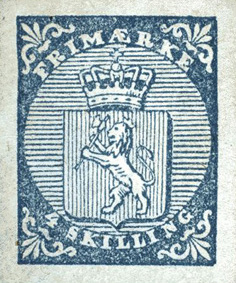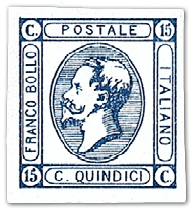 |
| Source |
The story of worldwide early postage stamps and postal history, organised by country, including a summary of related web resources.
Tuesday, 5 November 2013
Ecuador
Friday, 6 September 2013
The Master Forger, Jean de Sperati
 |
| Source |
Herbert Bloch, a former chairman of the Philatelic Foundation's expert committee.
Thursday, 5 September 2013
Chile 'Presidentes' Issues 1911-31
| Three values from the original set by the American Banknote Co. |
The "Presidentes of Chile"set, issued in 1911, was produced by the American Banknote Company. The 15 stampsset in its basic form was a superb example of the engraving and stamp production talents of that company at the time.Another seven values (colour changes plus additional values) were supplied by ABNC during 1912-13.
Argentina (Corrientes, Cordoba, Buenos Aires, Tierra del Fuego)
| France Ceres issue 1849 Source |
| Corrientes 1 real stamp, 1856 Source |
Monday, 2 September 2013
Haiti

Haiti has been independent from France since 1804 after a slave revolt. During its 200 year history, Haiti has had 32 coups and Haiti tops the league in perceived domestic corruption - corruption which has affected its stamps (in the form of forgeries and reprints).
The inaugural issue for Haiti was a six stamp imperforate set with "Liberty Head" as the design. The stamps feature the head of an allegorical figure of Liberty in left-facing profile. It is an interesting design, because some believe the head shown on the stamp has two faces. The left-facing profile is that of a white woman, and the right-facing profile is that of a black woman, supposedly the wife of the president of Haiti, Gen. Louis Etienne Felicite Salomon.
This was the first and last design that imitated the "French" model, as the rest of the issues for the next 25 years either had "Coat of Arms" or Presidents as the image.
Wednesday, 28 August 2013
Norway - Norge
 |
| Source |
However, in 1871, Norway introduced its first stamp with a posthorn design; stamps of this type, with periodic redesigns, have been in use ever since - making it one of the longest-lasting stamp designs in history and has been around for an amazing 142 years (in 2013).
 |
| Source |
To quote the Philatelic Database: The posthorn stamps have survived the dissolution of Norway’s union with Sweden, two world wars, a long period of German occupation and several currency reforms.
Images of Norwegian stamps.
Monday, 19 August 2013
Hungary, Austro-Hungarian Empire

Hungary was an integral part of the Austro-Hungarian Empire from 1867 until the end of WWI in 1918. The House of Habsburg shared power with the separate Hungarian government, and there was a dual constitutional monarchy. Franz Josef I was both the Emperor of Austria, and the King of Hungary. The two capitals of the Monarchy were Vienna in Austria, and Buda (joining adjacent Pest - 1870) in Hungary.
During 1850-1871, the stamps of Austria were also used in Hungary. But in 1867, the Hungarian Post became independent. The King of Hungary, Franz Josef I, naturally, was featured on the first 1871 Hungarian stamp issue.
Wednesday, 14 August 2013
Italy Monarchy

After some casting around for expertise in the newfangled art of stamp printing, the government settled on the house of Francesco Matraire in Turin. Matraire produced stamps with an embossed profile of Victor Emmanuel II.
Matraire of Turin also produced a distinctive 15c. stamp, the first designed specifically for the new kingdom, hence the inscription FRANCO BOLLO ITALIANO (Italian Postage Stamp). The stamp was lithographed pending receipt of a supply of stamps printed by De La Rue. Two versions of the stamp exist. The first ‘C’ in the bottom inscription is almost closed, while in the second the ‘C’ is open and the line below ‘Q’ of QUINDICI is broken.
Sweden - Sverige
 |
| The Treskilling Yellow Source: Wikipedia |
A printing error resulted in the Treskilling Yellow, a unique stamp that is currently the highest-priced in the world. Due to a printing error, this stamp is printed on yellow colored paper (meant for the eight skilling stamp of the same set) instead of the usual green color (used for the three skilling stamp). One copy of the yellow error variety of this stamp was found in 1885 by a young Swedish boy in his grandfather's collection. It is a one-of -a- kind rarity, as no other copies have been discovered to date. In 1996 the stamp was sold to an anonymous collector for $2.3 million at auction.
Subscribe to:
Posts (Atom)